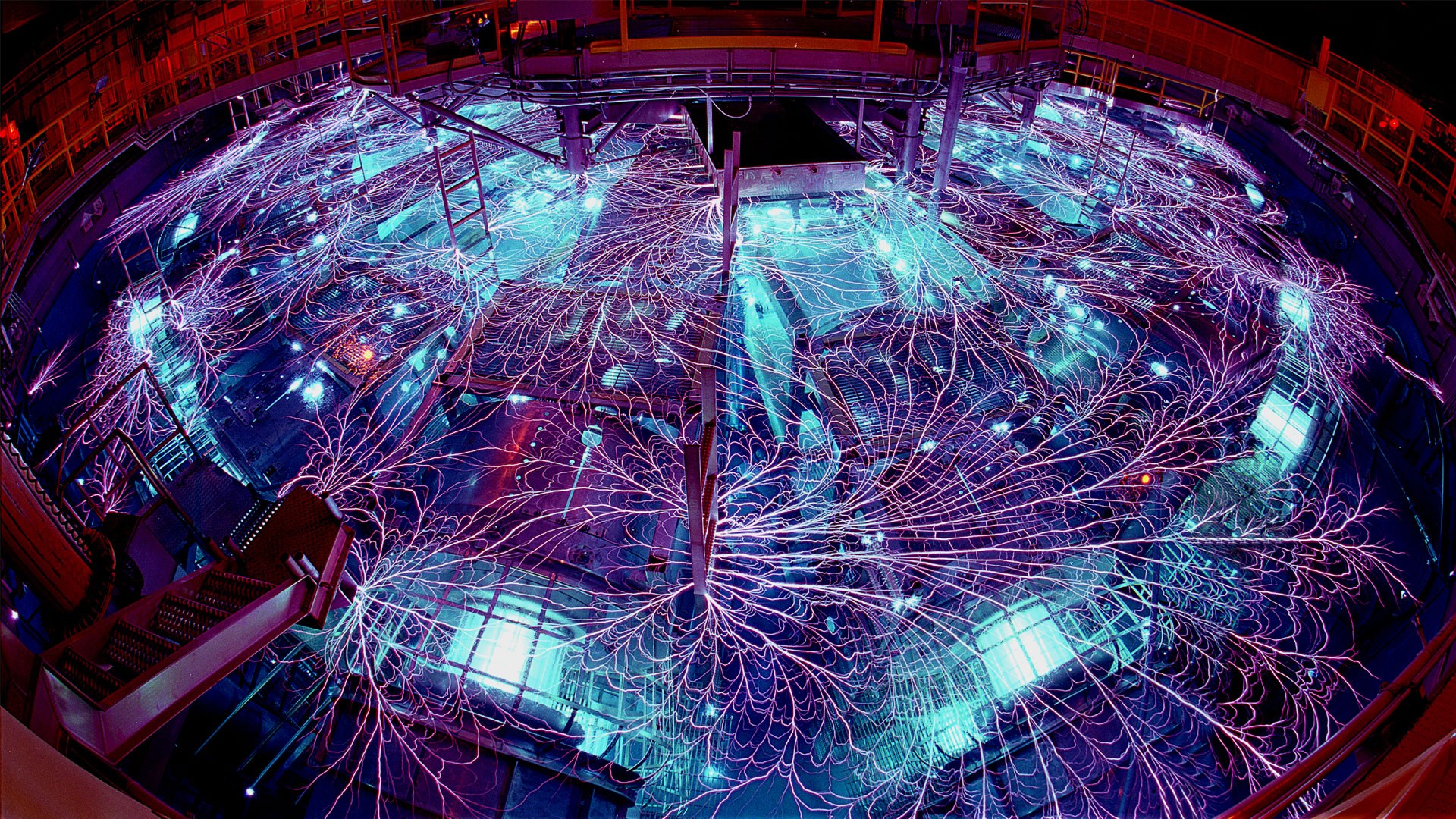
Ever since Oliphant's discovery, figuring out how to make a fusion reactor, or a "star in a jar," has been one of the holy grails of physics. It ended up being a more difficult problem than any of the fusion pioneers in the early twentieth century anticipated, which led to a running joke among nuclear physicists: fusion is always 30 years away."Fusion will be the source of energy for thousands of years to come. We think we're going to accomplish that in our lifetimes."
Z MACHINE
A technician works on the Z machine after a shot. Image: Daniel Oberhaus/Motherboard
Michael Cuneo at the Z machine. Image: Daniel Oberhaus/Motherboard
Michael Cuneo standing on the Z machine. Image: Daniel Oberhaus/Motherboard
A General Fusion technician welding a part of a new plasma injector. Image: Daniel Oberhaus/Motherboard
GENERAL FUSION
A General Fusion engineer works on the SPECTOR plasma injector. Image: Daniel Oberhaus/Motherboard
A General Fusion engineer works on the SPECTOR plasma injector prototype. Image: Daniel Oberhaus/Motherboard
A TALE OF TWO FUSION REACTORS
A Z machine technician works on the cage that contains the vacuum chamber elements. Image: Daniel Oberhaus/Motherboard
Michael DeLage stands on the General Fusion compression subunit prototype. Image: Daniel Oberhaus/Motherboard
An old General Fusion plasma injector model. Image: Daniel Oberhaus/Motherboard
